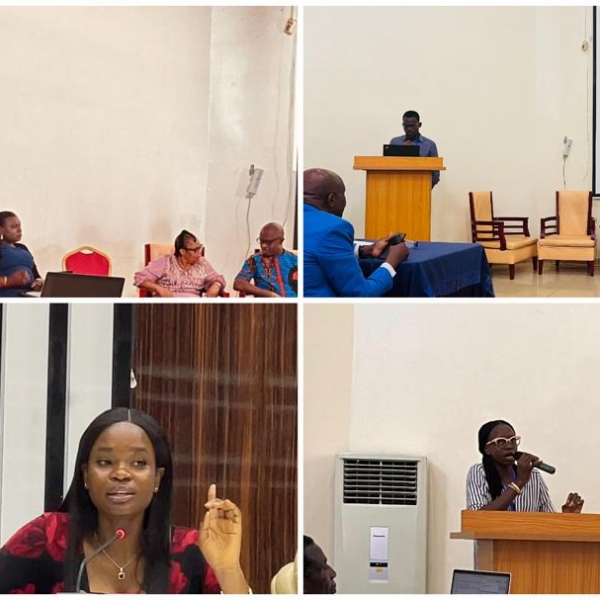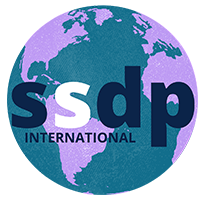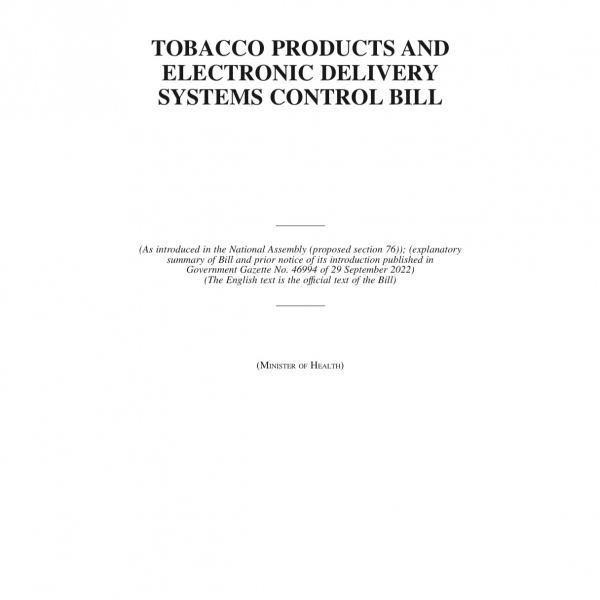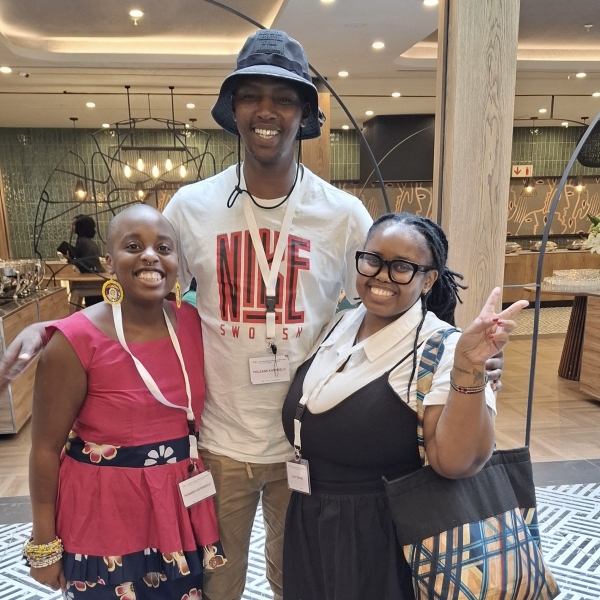SSDP LEADERS IN NIGERIA STEER CONVERSATION ON YOUTH PROGRAMMING IN DRUG POLICY AND PUBLIC HEALTH RESPONSE FOR EVIDENCE-BASED PRACTICE

Written by
Uchenna Frank Imo
Molly Unoh Ogbodum
Mmesommachi Grace Oji
Joshua Otei
Globally and in Nigeria, young people are impacted by punitive drug policies and the lack of adequate, tailored public health services. According to the 2018 National Drug Use Survey, over 70% of people who use drugs in Nigeria initiated use before the age of 25, yet most interventions are neither age-responsive nor youth-inclusive. Furthermore, young people remain underrepresented in policymaking processes despite being critical stakeholders in prevention, harm reduction, and recovery.
Nigeria's evolving drug landscape has uncovered major gaps in youth-focused programming and inclusive policymaking. Young people are faced with risks of criminalization and lack of access to evidence-based services, yet their experiences are rarely considered in policy design. Chapter Leader Joshua Otei, sparked the conversation through a panel discussion with members, SSDP International Board of Directors - Molly Ogbodum, Uchenna Imo and Mmesomachi Oji, at the 7th Biennial National Symposium on Drugs and Drug Control Policy in Nigeria hosted by the Centre for Research and Information on Substance Abuse (CRISA) in Uyo on the 21st of August 2025. The National Symposium, revered for assembling critical stakeholders in the drug policy, advocacy, and programming space, including international partners from the UNODC, created a strategic platform for these young leaders to speak on the critical issues influencing the diverse population of young people in Nigeria and other countries in Africa.
The panel brought together these public health professionals, researchers, and youth advocates to examine how youth-centered and scientifically grounded approaches can improve the national response to substance use. Leveraging findings from the 2018 National Drug Use Survey and youth-led initiatives, and with Students for Sensible Drug Policy (SSDP) International—a global youth-led organization advancing evidence-based drug policy reform—at the centre, the discussions interrogated barriers to youth inclusion and provided recommendations for integrating youth participation in research, program design, and policy formation. The session centered on how meaningful youth programming can bridge policy gaps, promote public health, and build participatory action, drawing on a rights-based, evidence-informed, and community-centered approach to support an inclusive and effective national drug response.
“...there have been recent changes and trends in the drug policy landscape in Nigeria that majorly influence young people, yet do not have their contributions at the heart of these engagements.”-Joshua
In starting the conversation, Joshua, an active volunteer and one of the Chapter executives, set the floor by highlighting recent changes and trends in the drug policy landscape in Nigeria that significantly influence young people but yet do not have their contributions at the heart of these engagements. According to him, there has been a recurrent cry for adjustment to include young people as an integral part of deliberations, decision-making, and design of interventions targeting the group. Joshua implored Molly to dissect the issue of failing youth engagement in Nigeria’s drug policy landscape and what this should look like.
“Meaningful engagement requires three practical commitments: decision-making power for youth in advisory processes; centering peer-led service delivery so that trained, fairly compensated peers can reach networks and bridge the care gap; and building capacity for youth leadership through training and institutional support..” -Molly
Reflecting on available evidence and prevailing consensus, Molly deliberated on the meaningful engagement of young people and how that can be achieved in the development and implementation of drug policy and harm reduction services. Now, Molly is an impact-driven youth leader with over five years of meaningful youth engagement at the local, national, regional, and global levels around public health issues, advocacy, research and policy development, primarily for inclusion and health system strengthening. She first established context by recognising that young people are not a homogenous group and attention should be given to the diversity that exists when involving them. She argued that young people must be engaged in drug policy and harm reduction as equal partners rather than tokenistic engagement or decorations, because they are often the most affected by punitive laws and bring lived-experience innovation to solutions.
She urged that meaningful engagement requires three practical commitments: decision-making power for youth in advisory processes; centering peer-led service delivery so that trained, fairly compensated peers can reach networks and bridge the care gap; and building capacity for youth leadership through training and institutional support. Her key recommendation centered on establishing youth advisory boards specifically in driving drug policy reform and making contributions for improved harm reduction services. Molly also stressed that when youth are resourced, respected, and meaningfully represented, service uptake improves, and drug policy shifts toward rights-based, evidence-driven practice.
“...models and practices to be adopted must be weighed on their contexts and targets - if power-focused, process-focused, impact-focused or equity-focused.”-Uchenna
Building on this, Joshua implored Uchenna to share models or best practices that exist (locally or globally) for designing public health responses that are youth-centered, culturally-relevant and evidence-based. With Uchenna’s peak interest in evidence-driven research and evaluation of interventions on drug issues among young people, he outlined key models and best practices, existing globally and locally, that should be adopted in designing public health responses that are youth-centered, culturally relevant and evidence-based. With over five years of experience programming and evaluating with and for young people, the long-term SSDP youth leader and sitting board member highlighted the dearth of evidence on models and practices employed in interventions for young people who use drugs in Africa. He mentioned several proven models that have worked in the global north and few interventions in Africa with traces of the components of these models.
Specifically, he appraised the community-based youth participatory action research (YPAR) model geared towards providing culturally grounded prevention programs and other notable models were mentioned and explained. Uchenna described participatory action research as being an encompassing practice for interventions that drive ownership and sustainability through its components of co-identification of issues, collaborative partnerships, capacity building and co-learning, action orientation, iterative cycles of action and reflection, cultural relevance and contextual grounding, shared ownership and dissemination, and sustainability and empowerment.
He highlighted the case of the South African Network of People Who Use Drugs (SANPUD) that had adopted a YPAR-like template in documenting access to naloxone among YPWUDs, the photovoice technique to co-diagnose alcohol and other drugs (AODs) harms leading to the development of an action plan. For Nigeria, he presented the case of Youth RISE’s ‘We The People’ Project that has employed traces of PAR in engaging the diverse groups of young people.
Moving forward, he emphasized that ecologically-based assessment and the ethnography approach of qualitative research design are proven practices that built culturally grounded prevention programs in Africa, citing the case of Tanzania where classic ethnography around heroin examined the youth hangouts (‘mageto’), social networks and injecting practices that informed subsequent harm reduction and treatment planning. Also presented were the positive youth-development, socio-ecological model (SEM), human-centered design (HCD) and evidence-to-action (E2A) models. He reiterated that models and practices to be adopted must be weighed against their contexts and targets - if power-focused, process-focused, impact-focused or equity-focused.
"First, programs are most effective when they are informed by lived experience. Second, peer-led harm reduction works. Third, youth movements can shift narratives.”-Mmesomachi
While Joshua navigated the conversation to provide substantial evidence of good practices, he prompted Mmesomachi to deliberate on lessons drawn from youth-led drug policy reform across the Global South and how they can be localised within Nigeria’s drug policy landscape. Mmesomachi Oji, a one-time President of the University of Calabar Chapter of Students for Sensible Drug Policy (SSDP) and now a Board Member of SSDP International, highlighted how youth-led reforms across the Global South provide valuable lessons for Nigeria’s drug policy and public health response.
She pointed to innovations from South Africa, Kenya, and Uganda, where peer-led harm reduction programs and digital campaigns effectively reached young people excluded by formal systems. According to her, in Latin America, youth collectives reframed drug use from being seen solely as a crime to being understood as a matter of public health and human rights, reducing stigma and expanding access to services.
For Nigeria, she emphasized three key takeaways. First, programs are most effective when they are informed by lived experience. Young people who use drugs must not only be consulted but also formally engaged to design, test, and evaluate the interventions meant to support them. Second, peer-led harm reduction works. Across the Global South, peers have proven to be trusted messengers. Embedding peer educators within schools, universities, and community spaces could help Nigeria move beyond abstinence-only messages toward practical, life-saving support. Third, youth movements can shift narratives. Just as Latin American youth reframed drug use from “crime” to “health and rights,” Nigerian youth can reshape the story here through advocacy, media, and legislative engagement—ensuring the response is rooted in dignity rather than punishment. She concluded that when young people lead, policy shifts from theory to lived reality. For Nigeria, localizing these lessons means building a response that is youth-centered, rights-based, and truly evidence-driven.
Joshua reiterated key points deduced from the discussions of the leaders, urging the key actors in the symposium to draw insights from the conversation and invested them in their current and future programming. He highlighted the major points of each speaker and implored them to digest their values into ‘how-to’ steps. In response to this, the leaders provided actionable pathways to remedy existing challenges and improve the quality of interventions and responses provided for the key groups.
Molly called for a collective movement to remove structural and systemic barriers that prevent young people from accessing harm reduction services. She called for a balanced perspective between professional and lived-experience expertise for achieving much gain in drug policy reform and harm reduction service delivery.
Uchenna added that the need for stakeholders and programmers to recall the UN Youth 2023 Strategy, within which the adopted framework by the UNODC is the Youth Empowerment Accelerator (YEA). According to him, it is important for actors to meaningfully involve youth in policy development, design, implementation, and evaluation of projects, as dictated by the Framework.
Mmesomma stressed that when young people lead, policy moves from theory to lived reality. For Nigeria, that meant shaping a drug response that is youth-centered, rights-based, and evidence-driven. She noted that harm reduction interventions must be designed with youth, using data rooted in their lived experiences. In her words: “Numbers reveal patterns, but stories give them meaning.”
Concerns were raised by the participating stakeholders about drawing the line (identifying the boundaries) between professionalism and lived experience in spearheading the design of interventions. Mmesomma argued it should not be a wall but a bridge. Professionals bring science and structure; lived experience offers context and humanity. Without both, policies risk being polished but impractical—or grassroots yet unsustainable. The answer, she emphasized, is co-production: shared design, shared ownership, shared outcomes. Her closing reminder was clear and urgent: “Evidence gives us direction, but lived experience gives us truth—Nigeria needs both.”
Molly and Uchenna built on the insight and called for synergy through unique contributions of both parties in designing interventions that speak to the heart of the affected group while allowing for best practices. Joshua crowned the conversation by reinforcing the need for this message to be strategically spread to stakeholders that influence the dynamics of responses and engage with Nigeria’s drug policy, beyond attendees of the symposium.



